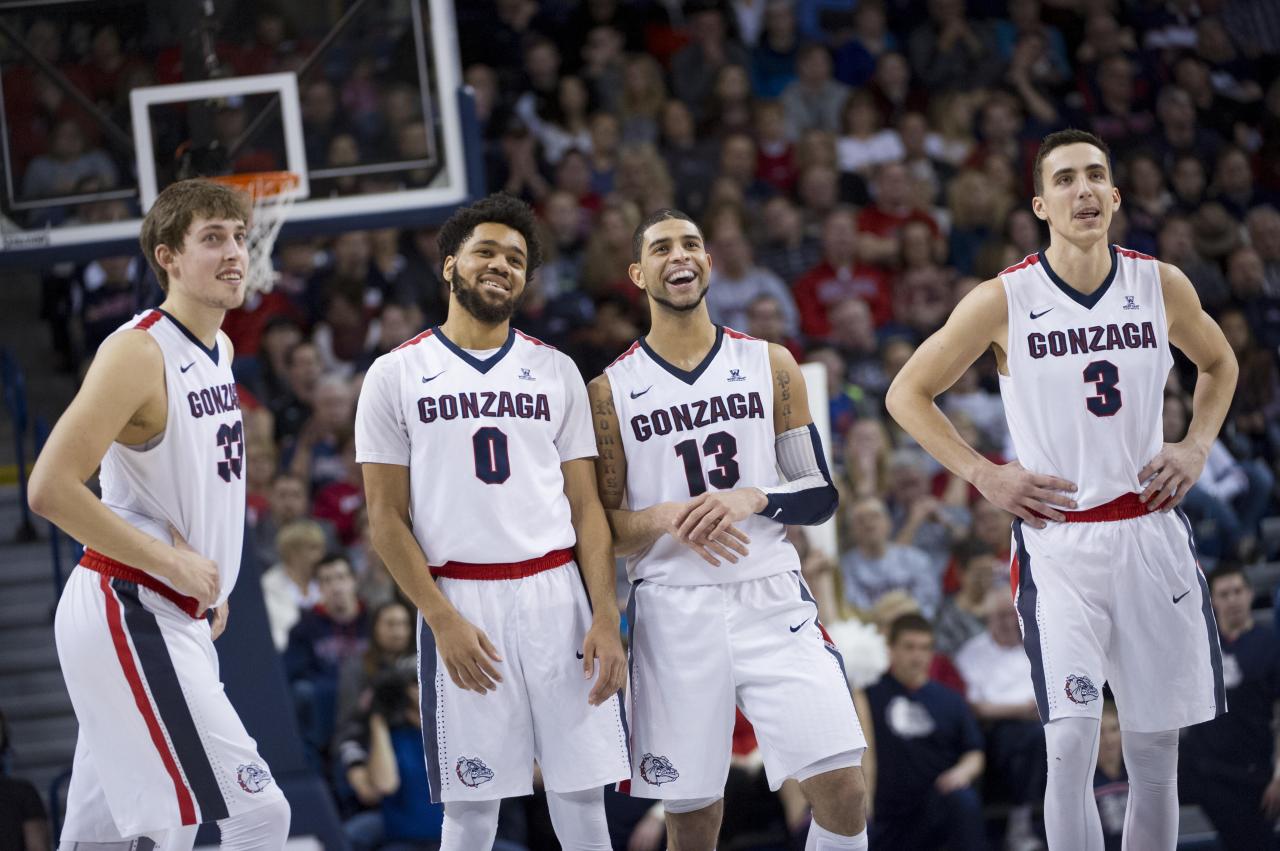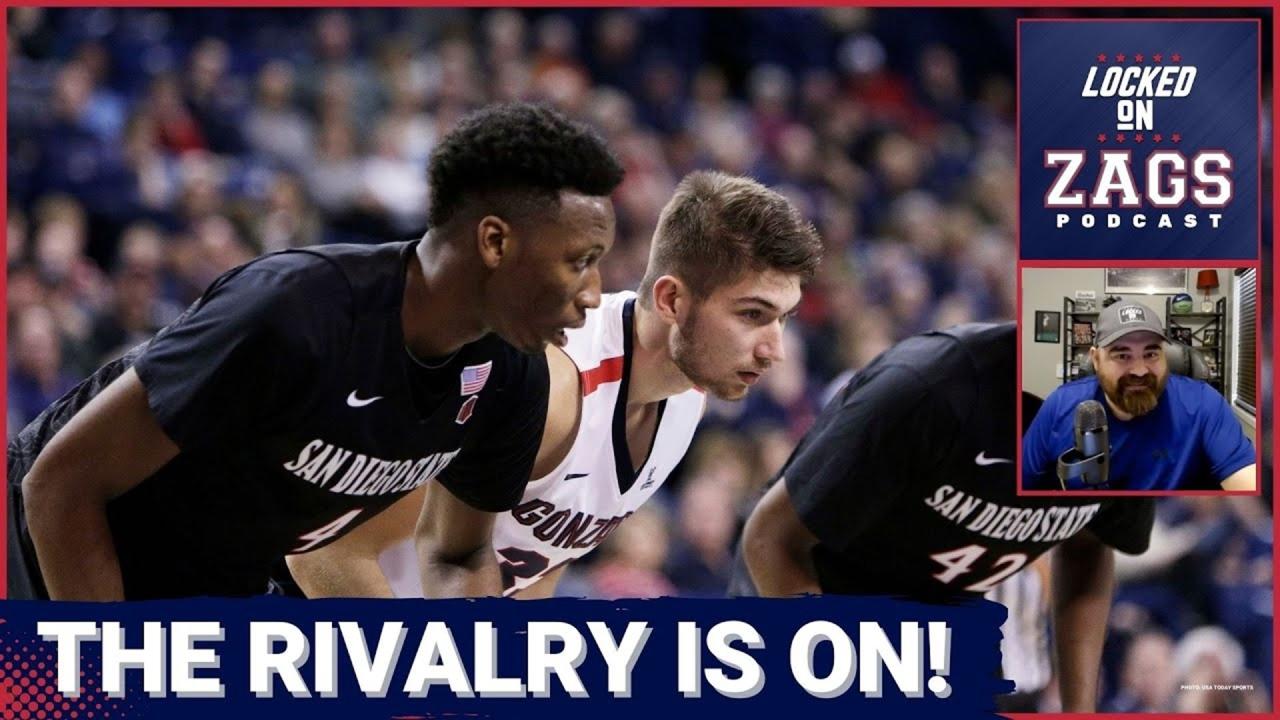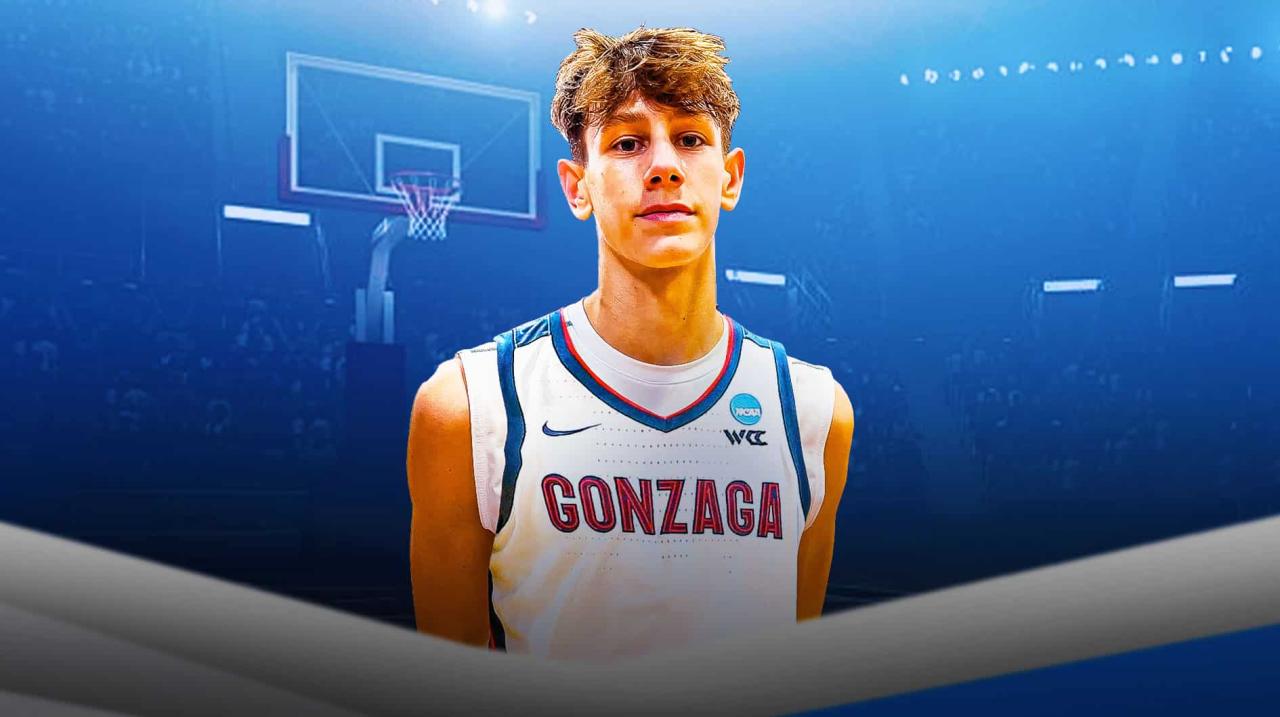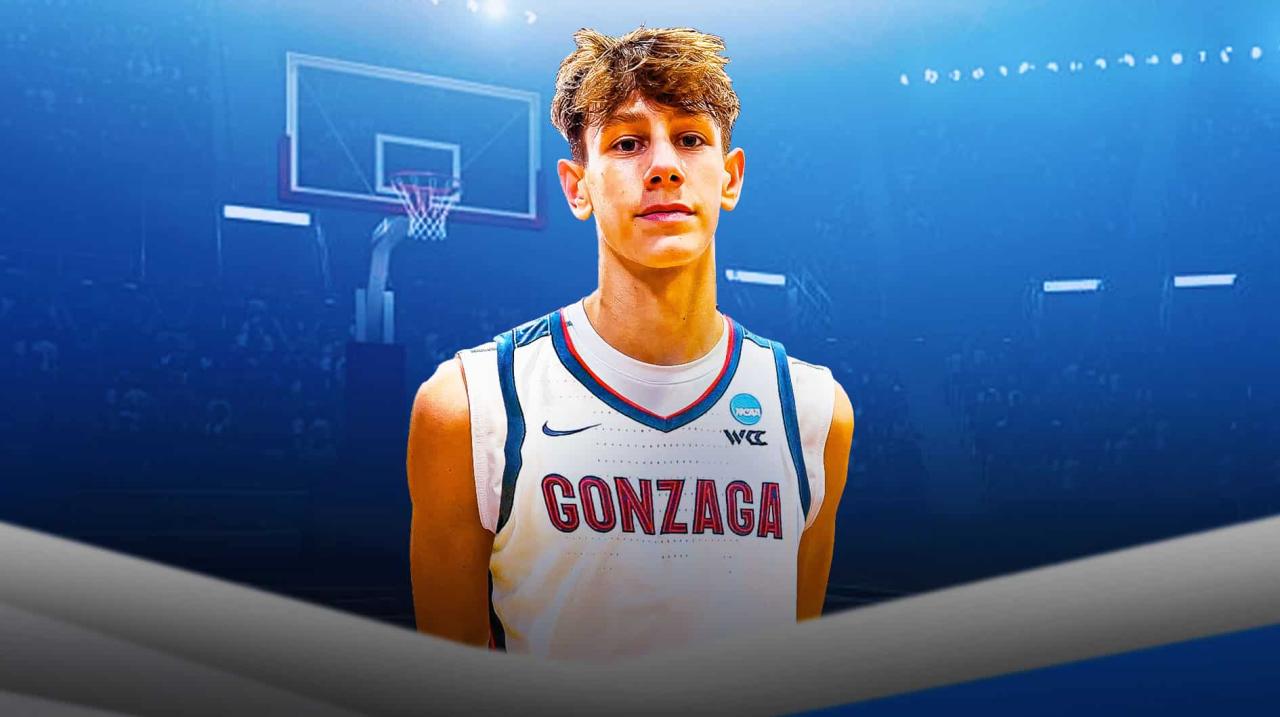Gonzaga basketball plane travel isn’t just about getting the team to games; it’s a logistical operation, a financial consideration, and even a public relations matter. This exploration delves into the history of the Bulldogs’ air travel, examining the types of aircraft used, the associated costs, and the potential impact on the team’s performance and public image. We’ll look at both the practical aspects – scheduling, safety protocols, and logistical challenges – and the broader implications, including the environmental footprint and potential for sponsorships.
So you’re curious about the Gonzaga basketball team’s travel arrangements, right? Their private plane is pretty sweet, I bet. It’s probably a far cry from the kind of transportation you’d find in a high-stakes competition like the vip 3 squid game , where the stakes are, well, life or death. But getting back to Gonzaga, imagine the pre-game pep talks happening on that plane!
From the economic benefits of efficient travel to the potential drawbacks of private jet use, we’ll examine the multifaceted story behind Gonzaga’s unique approach to team transportation. We’ll also consider alternative, more sustainable travel options and analyze how Gonzaga’s travel choices compare to other major college basketball programs. Get ready for a behind-the-scenes look at the high-flying world of Gonzaga basketball.
Gonzaga Basketball Team Travel: A Deep Dive

Gonzaga University’s men’s basketball program consistently ranks among the nation’s elite, and their travel arrangements reflect this status. The team’s extensive use of private aircraft has sparked discussion regarding costs, safety, environmental impact, and public perception. This article explores various facets of Gonzaga’s air travel, providing insights into its history, economic considerations, logistical challenges, and public relations aspects.
Gonzaga Basketball Team Travel History

Gonzaga’s reliance on private air travel for its basketball team is a relatively recent phenomenon, accelerating in the past two decades alongside the program’s rise in national prominence. While precise details about the earliest use of private planes are scarce, the increased frequency and reliance on chartered flights coincided with the team’s improved competitive standing and resulting need for efficient and timely travel to various games across the country.
So, you’re curious about the Gonzaga basketball team’s travel arrangements, right? Their plane is probably pretty sweet, but imagine this: the sheer scale and artistry of a coordinated spectacle like the shanghai dragon drone show – that’s a whole different level of coordinated movement! Thinking about the precision needed for both, you start to appreciate the logistics involved in getting a team of basketball players across the country, just as much as you do for hundreds of drones creating a dragon in the sky.
This contrasts with earlier eras when the team likely relied more heavily on commercial flights and bus travel for shorter distances. Compared to other major college basketball programs, Gonzaga’s consistent use of private jets stands out, although some other high-profile programs also utilize private charters, particularly for longer distances or crucial games. The decision to use private planes is largely driven by factors like scheduling flexibility, player comfort, and minimizing travel fatigue to optimize performance.
A timeline of significant travel events involving the team’s plane would require access to internal Gonzaga records. However, significant tournament runs, such as deep NCAA tournament appearances, likely involved extensive private jet travel. Similarly, crucial conference games against rivals might also utilize private flights for optimal scheduling and player well-being.
| Year | Aircraft Type | Event | Details |
| 2023 | Gulfstream G650ER (Example) | NCAA Tournament | Chartered flight to various tournament locations. |
| 2022 | Boeing Business Jet (Example) | West Coast Conference Tournament | Used for efficient travel between games. |
| 2021 | Challenger 605 (Example) | Non-Conference Games | Flights to key non-conference opponents. |
| 2020 | (Data unavailable) | (Data unavailable) | (Data unavailable) |
Economic Aspects of Gonzaga’s Air Travel, Gonzaga basketball plane
Chartering private aircraft is undoubtedly expensive. Costs vary significantly based on aircraft type, flight distance, and the time of year. A single charter flight could range from tens of thousands to hundreds of thousands of dollars, depending on these factors. Gonzaga likely offsets these costs through a combination of athletic department budgets, fundraising initiatives, and potentially corporate sponsorships.
Fundraising efforts could include alumni donations specifically designated for travel expenses or broader campaigns that contribute to the overall athletic budget.
Sponsorship opportunities could involve naming rights for the team’s plane or integrating sponsors’ logos into team travel materials. A hypothetical budget for a single season’s air travel could include factors like flight hours, aircraft rental, catering, ground transportation, and insurance, resulting in a substantial annual expenditure.
Safety and Logistics of Gonzaga’s Air Travel
Potential safety concerns with private aircraft include mechanical malfunctions, weather-related issues, and pilot error. Gonzaga likely employs rigorous safety protocols, including thorough aircraft maintenance, pilot background checks, and adherence to all FAA regulations. Logistical challenges involve coordinating travel for a large team, including players, coaches, support staff, and equipment. Flight scheduling must account for game times, practice schedules, and player rest, impacting game preparation and recovery significantly.
Public Perception and Media Coverage

Media coverage of Gonzaga’s use of private planes has been mixed. Some outlets have highlighted the team’s success and the advantages of private travel, while others have questioned the costs and potential environmental impact. Public reactions have varied, with some praising the program’s commitment to its athletes’ well-being and others expressing concerns about resource allocation and sustainability. Instances of public discussion might include social media comments, articles in sports publications, or segments on sports news shows.
Potential public relations strategies for managing perceptions could include transparency about the funding sources for air travel, emphasizing the program’s commitment to player success, and highlighting any community outreach or charitable initiatives linked to the team.
Environmental Impact of Gonzaga’s Air Travel
Frequent private jet travel has a significant carbon footprint. The environmental implications include greenhouse gas emissions contributing to climate change. Sustainable travel alternatives Gonzaga could explore include offsetting carbon emissions through investments in carbon reduction projects, reducing the number of flights by utilizing other modes of transport for shorter distances, or opting for more fuel-efficient aircraft. A plan to reduce the team’s environmental impact might involve setting emission reduction targets, investing in sustainable aviation fuels, and promoting environmentally conscious travel practices.
So, you’re curious about the Gonzaga basketball team’s travel arrangements, right? Thinking about their plane is interesting, but have you seen the incredible visuals? Check out the amazing coordinated light show of the shanghai new year drone show ; it’s a whole different level of coordinated movement. Back to Gonzaga’s plane though – I bet even they would be impressed by that scale!
Illustrative Examples of Gonzaga’s Plane Travel
A hypothetical Gonzaga basketball team flight might involve a chartered Gulfstream G550, carrying 20 passengers (players, coaches, staff), traveling from Spokane to Indianapolis for a game. Pre-flight preparations would include luggage check-in, security, and boarding. In-flight activities might include rest, studying game film, or team bonding. Post-flight procedures would involve ground transportation to the hotel and preparation for practice or the game.
A memorable Gonzaga basketball team flight (hypothetical):
- The team chartered a smaller plane for a short trip, experiencing a minor mechanical issue mid-flight.
- The pilot expertly handled the situation, ensuring a safe landing at an alternate airport.
- The team experienced a slight delay but ultimately arrived on time for their game, demonstrating resilience and teamwork.
- The experience strengthened the team’s bond and highlighted the importance of safety and preparedness.
Last Word

Gonzaga’s use of private planes for basketball travel presents a complex picture. While it offers advantages in terms of efficiency, player comfort, and potential fundraising, it also raises questions about cost, environmental impact, and public perception. Ultimately, the team’s travel strategy reflects a balancing act between logistical needs, financial considerations, and a commitment to its student-athletes. Understanding the various facets of this operation provides a unique lens through which to view the world of elite college basketball.
FAQ Compilation: Gonzaga Basketball Plane
What kind of aircraft does Gonzaga typically use?
The specific aircraft vary, but they are generally charter jets sized to comfortably accommodate the team and staff.
Who pays for Gonzaga’s air travel?
Funding likely comes from a combination of athletic department budgets, donations, and potentially sponsorships.
How does Gonzaga’s air travel compare to other schools?
Compared to some programs, Gonzaga’s reliance on private jets might be higher, but many factors influence travel choices, including geographical location and budget.
What safety measures are in place for Gonzaga’s flights?
While specific details aren’t public, standard aviation safety protocols and likely additional measures for team safety are employed.
